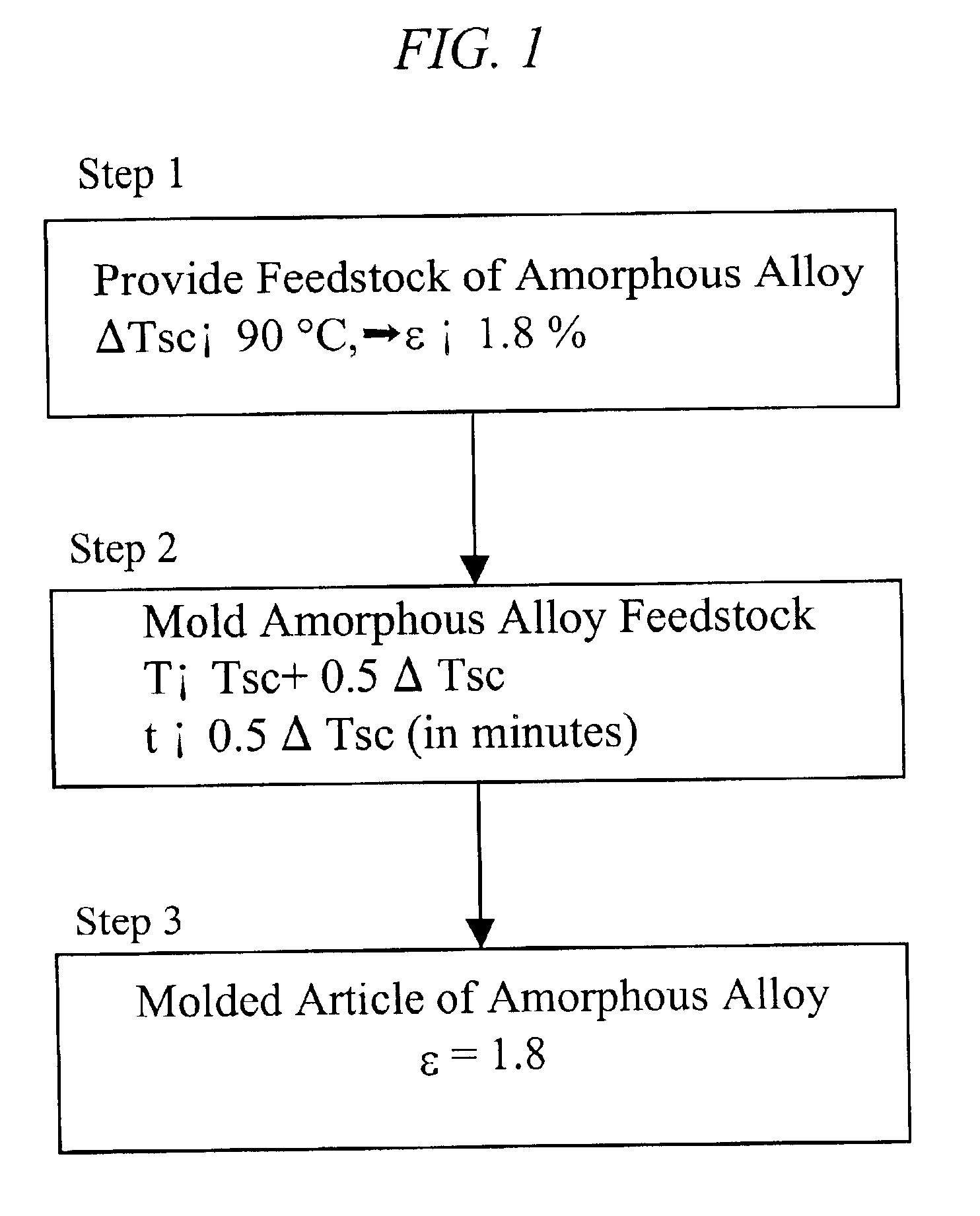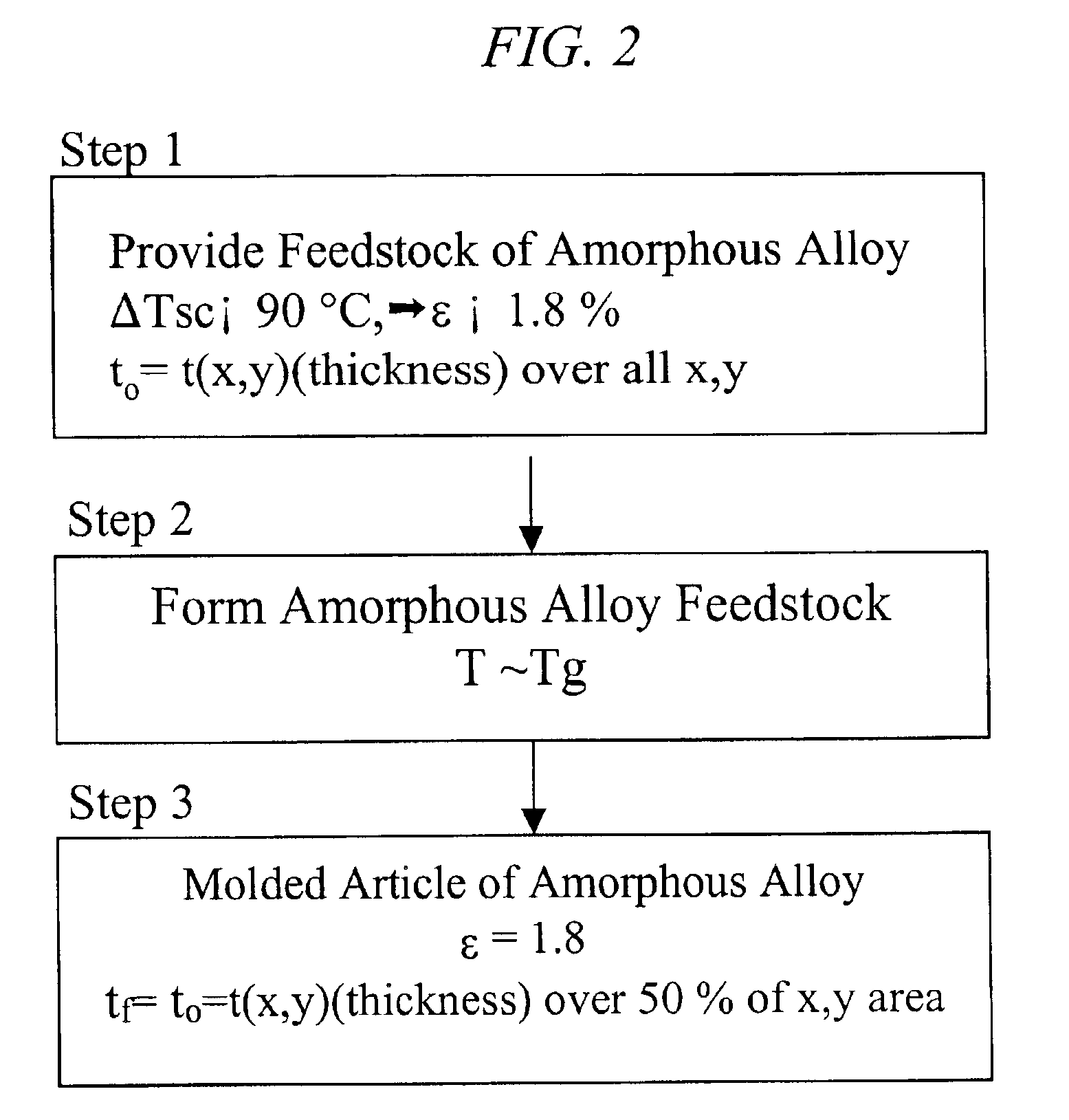Method of forming molded articles of amorphous alloy with high elastic limit
a technology of elastic limit and molded articles, which is applied in the field of forming molded articles of bulksolidifying amorphous alloys, can solve the problems of loss of fracture toughness, loss of ductility of amorphous alloys, and substantial loss of high elastic limit of most bulk-solidifying amorphous alloys, so as to achieve conservative time and temperature, increase the effect of ductility and ductility
- Summary
- Abstract
- Description
- Claims
- Application Information
AI Technical Summary
Problems solved by technology
Method used
Image
Examples
Embodiment Construction
This invention is directed to a method of forming molded articles of bulk-solidifying amorphous alloys around the glass transition range, which preserves the high elastic limit of the bulk solidifying amorphous alloy upon the completion of molding process.
In one embodiment of the invention, shown schematically in FIG. 1, a feedstock of bulk solidifying amorphous alloy is provided at Step 1. At Step 2, the provided feedstock of bulk solidifying amorphous alloy is molded around the glass transition range such that the final product maintains the high elastic limit of the bulk solidifying amorphous alloy feedstock. By controlling the time and temperature of the molding, upon the completion of forming process, at Step 3, the molded articles according to the current invention retains an elastic limit of at least 1.2%, and preferably an elastic limit of at least 1.8%, and most preferably an elastic limit of at least of 1.8% plus a bend ductility of at least 1.0%. Herein, the elastic limit...
PUM
| Property | Measurement | Unit |
|---|---|---|
| molding temperature | aaaaa | aaaaa |
| Tg | aaaaa | aaaaa |
| Tg | aaaaa | aaaaa |
Abstract
Description
Claims
Application Information
 Login to View More
Login to View More - R&D
- Intellectual Property
- Life Sciences
- Materials
- Tech Scout
- Unparalleled Data Quality
- Higher Quality Content
- 60% Fewer Hallucinations
Browse by: Latest US Patents, China's latest patents, Technical Efficacy Thesaurus, Application Domain, Technology Topic, Popular Technical Reports.
© 2025 PatSnap. All rights reserved.Legal|Privacy policy|Modern Slavery Act Transparency Statement|Sitemap|About US| Contact US: help@patsnap.com



